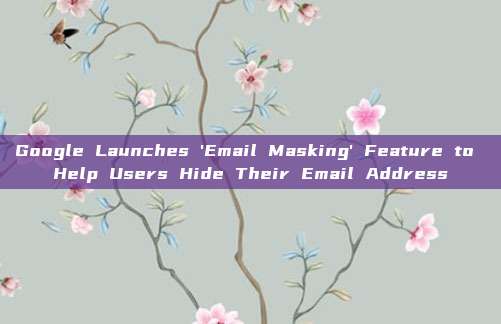
The 'Email Masking' feature will be integrated into Gboard's auto-fill system, allowing Android users to create random, one-time-use email addresses during the registration process. This feature is similar to Apple's 'Hide My Email' but can be used more widely in the Google ecosystem.
The Core Mechanism of the Email Masking Feature
This feature utilizes Google's 'Autofill with Google' framework, which currently suggests saving credentials during application or website registration. Email masking adds a new option to this interface: a 'Use Email Masking' button, which, when clicked, generates a unique alias (e.g., aq7z9d@shielded.google).

These aliases will be forwarded through Google's servers, delivering messages to the user's main inbox while hiding the user's real address. It is important to note that the system runs on the server side, which means the creation and management of aliases depend on Google's backend infrastructure, which will remain inactive before the official launch.
From the code of the APK, it can be seen that users can disable the forwarding feature of any alias through Gmail settings, thereby effectively blocking the source of spam. This feature is expected to be located under the 'Forwarding and POP/IMAP' tab, where users can disconnect the alias from the main account. The preview by Android Authority shows that the user interface of this feature has been integrated into Gboard, appearing as a contextual suggestion during email field interaction.
Privacy Protection and Anti-Spam Advantages
The architecture of the email masking solution addresses two key privacy challenges: cross-service tracking and data leakage vulnerabilities. By assigning a unique alias to each application or website, users can scatter their digital footprint and prevent third-party cross-platform association activities. For example, shopping applications and fitness services will receive different aliases, thus isolating potential data leaks. If a leak occurs, the affected alias can be disabled without affecting the main email address.
In addition, the feature also improves Google’s existing alias method, such as the “+” tag (e.g., user+newsletter@gmail.com), which has been blocked by many services. Unlike static suffixes, the random aliases of email blocking are harder to filter, providing stronger anti-spam capabilities. Compared to third-party services (such as TempMail) that require manual alias generation, it also simplifies the workflow.
Google’s move follows Apple’s introduction of the “Hide My Email” feature for iCloud+ subscribers in 2021, which also generates one-time addresses. However, the integration of email blocking into Gboard and auto-fill makes it a system-level tool for Android, without relying on third-party password managers that offer similar features. This integration may普及ize the email blocking feature to over 3 billion active Android devices, unlike Apple’s paid solution.
Developers point out that this feature may reduce reliance on OAuth-based login, which grants applications access to the configuration files of Google accounts. By decoupling authentication from email exposure, email blocking provides a compromise for users concerned about sharing personal data.
Future Prospects and Potential Issues
Although code submissions have confirmed the progress of the feature, Google has not announced a specific timeline for release. The main unknown issues include:
- Alias Expiration: Is the address valid for a single use and then expires, or can it be used for repeated interactions.
- Cross-platform Support: Is it possible to expand to iOS or desktop environments.
- Commercialization Model: Whether it is linked to the Google One subscription service, although preliminary reports indicate that the feature will be widely available.
Security experts emphasize that the effectiveness of email blocking depends on the reliability of forwarding and Google’s ability to prevent alias hijacking. Like Apple’s system, end-to-end encryption for forwarded emails has not been confirmed.
Blocking email is the most significant step Google has taken in email privacy since adopting SMTP STARTTLS. By embedding a one-time name into the core workflow of Android, Google may reshape the way users manage their digital identities, reduce spam, lower the risk of leaks, and curb cross-app tracking. As development continues, the success of this feature will depend on seamless integration and transparent user control, ensuring that privacy is protected without sacrificing convenience.
Reference Source:
Google’s New Email Shield Feature Allows Users to Hide Email From Apps
评论已关闭